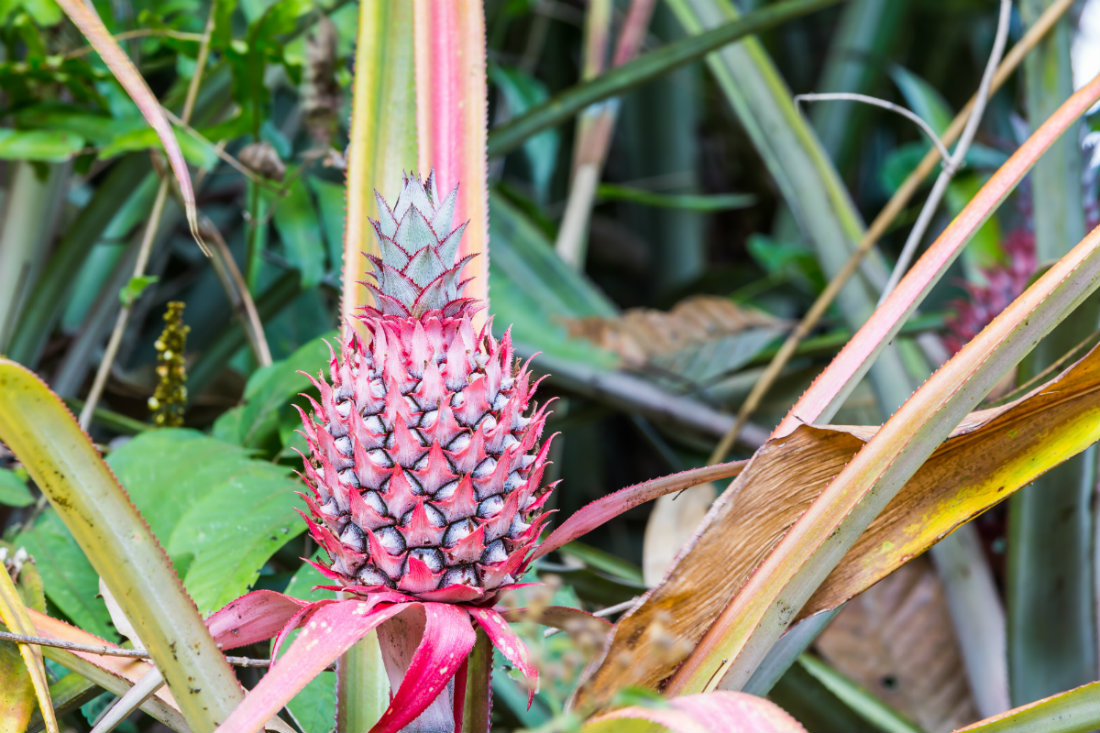
Pink Pineapple
Recently, food producer Del Monte announced the release of its new genetically engineered pineapple, “Rosé,” which will have pink flesh as compared to the traditional yellow varieties. The FDA, after reviewing information provided by Del Monte about the safety of their new pineapple, they stated “the new pineapple is as safe and nutritious as its conventional counterparts” and saw no reason to interfere with distribution in the U.S.
Why Pink?
Traditional pineapples have a sunshine-yellow color which is produced by a series of pigment-converting enzymes. In order for the new strain of pineapple to have pink flesh, Del Monte was able to interrupt these enzymes through genetic modification, producing lower levels of the enzymes that change the pink pigment lycopene to the yellow beta carotene. This allows the flesh to retain the pink color and as stated by Del Monte, “lycopene is found in a number of red or pink foods such as tomatoes and watermelon and as such, is safe for human consumption.” According to the FDA, the new fruit will have a label attached to the leaves stating “Extra Sweet Pink Flesh Pineapple” so the consumer won’t be confused by the new variety. The outside of the pineapple looks exactly the same for both yellow and pink varieties.
Hybridization
Cross-breeding of food-bearing plants has been going on for thousands of years. Farmers would often select plants with desirable characteristics and use these as a seed source for subsequent generations. More recently however, deliberate hybridization has been utilized which incorporates the science of genetics, chemistry, molecular biology and more. As science has become more involved in the process, legitimate concerns have been voiced over the health and safety of intense and specific hybridization. Multiple studies have confirmed the health risks associated with genetically altering our food supply yet the FDA seems to repeatedly turn a blind eye.
Pesticide Use and Transport
All pineapples grown in Costa Rica are exposed to heavy pesticide application including organophosphates, organochlorines and other hormone disruptors. Approximately 18 pounds of these harmful pesticides are used per acre of crop every year. Not only are these known to be potential carcinogens and may be related to birth defects but farm workers are at the greatest risk from direct exposure.
Once the pineapples are picked, they do not ripen any further than at the moment they were harvested. In order to transport them, they are typically picked while still green. In order to chemically ripen them, a growth regulator known as Ethephon is sprayed on the crop one week before harvest. This turns into ethylene which causes the pineapples to turn a golden yellow. If picked when perfectly ripe, they are highly perishable and can spoil within 2 days if stored at room temperature.
I’m not sure about you but after doing all of this reading and research, I’ll be looking only for organic pineapples that are not grown in Costa Rica. Cheers to organic produce!



